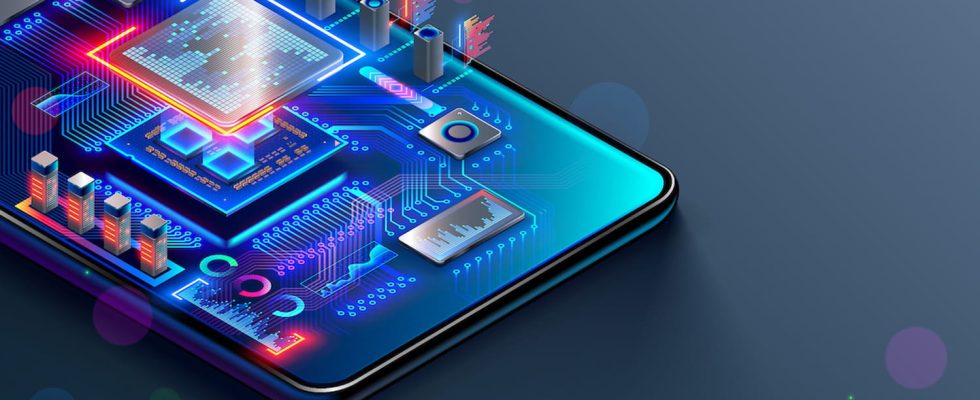Much has been said about artificial intelligence in 2023. And it will continue in 2024. It is even starting to be installed in our smartphones to simplify our lives with practical and surprising functions.
It’s hard to miss the AI revolution right now! Over the past year, and particularly since the arrival of the famous ChatGPT conversational robot, artificial intelligence has invaded all areas of high-tech with often spectacular applications and sometimes worrying prospects. And that was just the beginning! Because AI will be introduced everywhere to assist us on a daily basis. This is already the case in our smartphones. Samsung has just presented its new high-end models, the Galaxy S24, all equipped with in-house AI, Galaxy AI, with astonishing functions. Here are some concrete examples of what it can bring you on a daily basis. And what we will soon find in all smartphones.
Translate text and voice live Google Pixels already make it possible to translate the exchanges of a conversation into two different languages on the fly so that each interlocutor can understand the other. Samsung takes the concept further by offering live translation during phone calls. The function is triggered on demand when the call is initiated from an S24. A synthetic voice then announces that the conversation will be translated. You then just have to speak normally so that the oral translation is automatically carried out at the end of each sentence with, as a bonus, a written transcription. Note that automatic translation is also at work in messages using the Samsung virtual keyboard.
Messages always well formulated Text generation is one of the favorite areas of AI. Now you can write an SMS and ask to transform it according to the recipient. The vocabulary, syntax and tone used will be changed on the fly to make the message fit a close friend or your boss.

Circle to search This is one of the main functions highlighted by Samsung. Designed with Google, it is in the form of an improved version of the Google Lens function which allows, from an image or a description, to find equivalences on the Web. Here, simply circle an element displayed on the screen (an object, a face, a plant, an animal, etc.), whatever the app (except those that prevent screenshots) to launch a search in a much more practical way than with keywords or a textual description. Present on the S24, this new function will also be available on Pixels at the end of the month.

Image editing made easy No more long minutes reworking your images on the small screen of your mobile or on your computer. The AI now carries out very heavy operations for you. So, for example, you can erase reflections when the photo is taken behind glass, delete unwanted elements with the famous magic eraser (Google), but also move and resize elements on a photo, perform rotations… AI takes care of automatically and intelligently correcting the areas impacted by the retouching, even generating the missing content taking inspiration from the surrounding areas. Totally stunning!

Summaries in one click You don’t have the time or the desire to read a long text or an article found on the Web? The AI can summarize it in the blink of an eye, highlighting the key points, all translated into French if the text is in another language! The summary function is also available for meetings (up to 10 people). Simply record the exchanges using the dictaphone to then obtain a transcription and summary. The results are not yet perfect but very promising.
These few examples are not science fiction: they are functions that exist today in devices sold in the beginning. And that’s just the beginning. Because by using new generation chips that are much more powerful than the previous ones, equipped with modules dedicated to AI, tomorrow’s smartphones will go much further with practical and spectacular functions that will not even need the Internet, since everything will be done locally, in the device.
